Ensuring Reliable Water
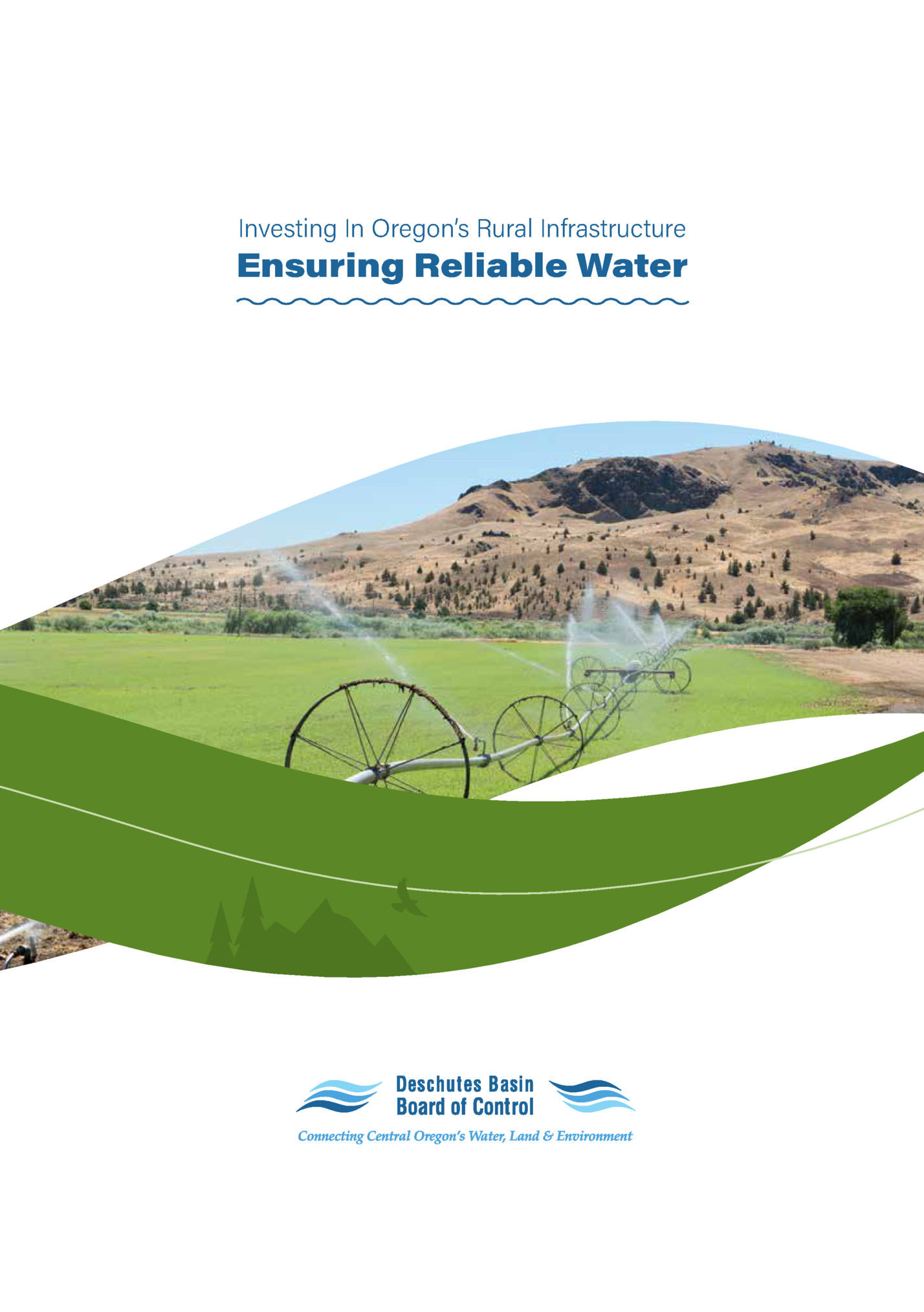
Central Oregon. It was only natural for the first pioneers to settle close to the Deschutes River. Homesteaders without access to water tried their luck with dry farming, best described as a lottery considering the desert climate. No one ever said rural agriculture was easy work. But these days, the rural spirit that pioneered our country is at dire risk. Dwindling, uncertain water supplies are making it harder and harder for farmers to grow their crops, feed our communities, and keep rural values alive. To preserve our traditional way of life, we must look to updating antiquated irrigation infrastructure in a way that does the most good for farmers, the community, and the environment. Agriculture continues to contribute to the region’s economy through job creation, capital investment, and reliable economic activity. “The frequency and intensity of drought events highlight the urgency to update antiquated irrigation infrastructure through water conservation projects. We are committed to piping open canals and improving on-farm efficiencies to increase water reliability and conserve water.” —Craig Horrell, President of the Deschutes Basin Board of Control
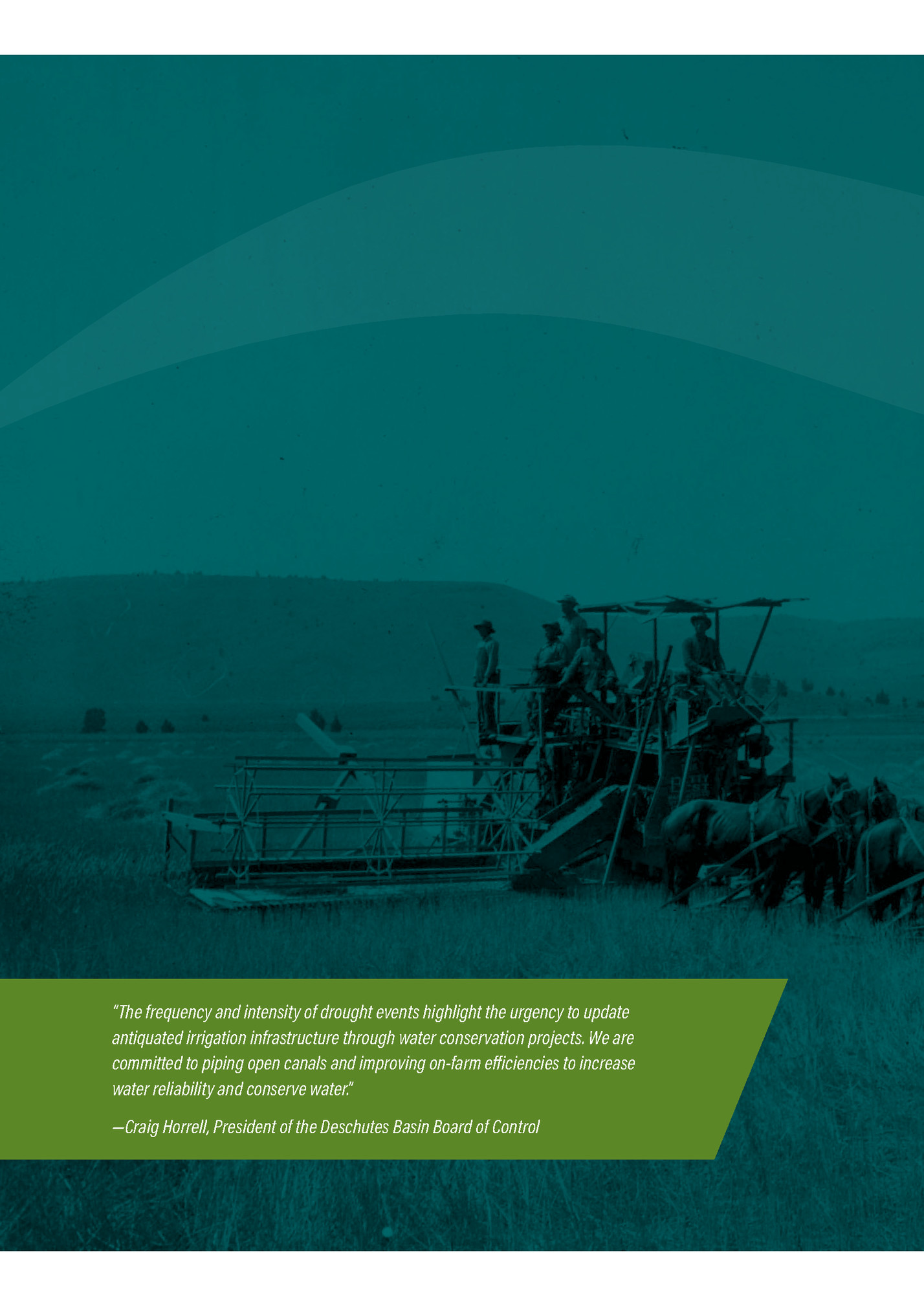
Deschutes Basin Irrigation districts play an invaluable role in conveying water supplies throughout the Deschutes Basin in Central Oregon to many farm and ranch families, and are also working diligently to improve fish and wildlife habitat. The Deschutes Basin Board of Control (DBBC) is comprised of eight irrigation districts in rural Central Oregon that are critical to conveying water supplies throughout the Deschutes Basin to over 7,600 farm and ranch families, schools, and local parks and recreation districts. “Funding irrigation modernization is a smart investment. We have an incredible opportunity to create jobs, save and generate energy, and conserve and improve water supplies for agriculture and the environment.” —Mike Britton, North Unit Irrigation Manager WHAT WE DO Convey water to 7,653 farmers, ranchers, cities, parks and schools. Irrigate over 150,000 acres throughout the Deschutes Basin. Contribute annually to fish and wildlife habitat conservation. Over $5.2 million in restoration funds will be collected over the next 30 years. Partner with stakeholders to secure large-scale investments needed to conserve water supplies, improve fish and wildlife habitat, reduce energy costs, and increase agriculture production. Creating jobs for economic growth.

The Benefits Go Far Investments in modernizing irrigation infrastructure in the Irrigation districts throughout Oregon’s Deschutes Basin are implementing an array of water conservation, fisheries improvement, and hydropower projects. These projects help hardworking small family farmers and ranchers raise crops and benefit the environment. Since the 1960s, the Districts have significantly reduced their water use. These conserved water supplies are increasing instream flows in the Deschutes River, Crooked River, Whychus Creek, Tumalo Creek, and Deschutes Basin create multiple economic, environmental, conservation, and resilienceoriented benefits for Central Oregon’s communities. other smaller tributaries; improving habitat for the Oregon spotted frog, salmon, steelhead, other fish and wildlife; and providing recreational benefits. Many of Central Oregon irrigation districts these projects, such as piping irrigation canals, also increase public safety and have successfully implemented over create the opportunity for developing small hydropower generation with zero carbon emissions. Central Oregon’s irrigation districts have $350 million of projects that can move quickly through design, bid, and construction, and will create jobs at each stage. These infrastructure conservation projects will play a significant role in stimulating the economy. These projects could benefit from increased funding to existing programs, including the Natural Resources Conservation Service’s Watershed Protection and Flood Prevention Act (PL-566), Bureau of Reclamation’s WaterSMART program, Environmental Protection Service’s Clean Water State Revolving Fund, and U.S. Fish and Wildlife Service’s Fisheries Restoration and Irrigation Mitigation Act program, along with measures to increase district borrowing capabilities, by forgiving federal indebtedness, are all proven mechanisms for job creation and stimulating our economy. A PIVOTAL MOMENT The time is now to help rural communities increase water reliability and restore fish and wildlife habitat, while also investing in critical infrastructure and creating opportunities for economic growth. STIMULATE THE ECONOMY INCREASE WATER RELIABILITY DEVELOP LOCAL RENEWABLE ENERGY STRENGTHEN RURAL ECONOMIES RESTORE FISH AND WILDLIFE HABITAT $53 million in projects, conserving over 49 cfs annually, and ensuring more water for farmers, food, and fish.

POSITIVE IMPACT IN THE DESCHUTES BASIN Conserve 165.7 million gallons of water annually. Modernization projects throughout the irrigation districts in the Deschutes Basin will create multiple benefits for our local communities. Support 4,946 jobs through these projects. $219.9 million in economic development for our rural communities. Generate more than 10-15 megawatts of new hydropower using irrigation water.
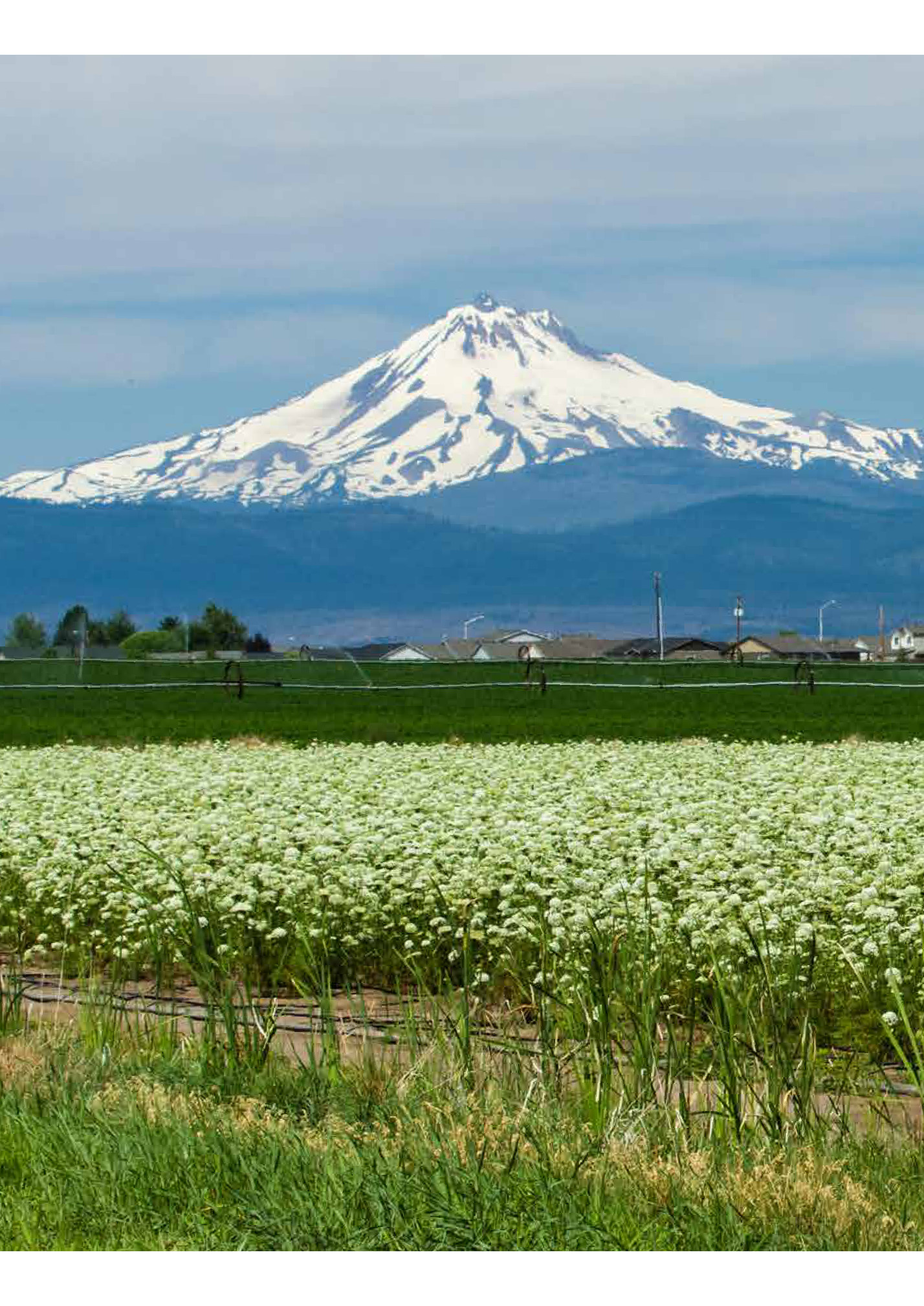
& Restoration Projects CENTRAL OREGON Smith Rock Way & King Way 1A (2) Smith Rock & King Way 1B Pilot Butte Canal Phases 2-14 SWALLEY Rogers Way MC-7 Elder Lateral TUMALO Tumalo Feed VB Tumalo Feed VB Tumalo Feed VB Pipes Group 6A Pipes Group 4 Pipes Group 6B Measurement/Monitoring NORTH UNIT 31,32,34,43 Lateral Piping Main Canal Automation 41-9/58-3-2 Lateral Piping Main Canal Lining Bend Diversion Fish Screens (Design and SHPO complete) LONE PINE ARNOLD Main Canal Phase 1 Main Canal Phase 2 Main Canal Phase 3 Main Canal Phase 4 OCHOCO Group 1 - McKay Switch Group 2 - Grimes Flat Piping Group 3 - IronHorse Piping TOTAL COMPLETED TOTAL NEEDED TOTAL Total Cost Construction & Engineering PL 83-566 Funding (1) Required Match Funds $22 M $11.2 M Portion of Cost Share Obtained Cost Share Need Approximate Pipe Linear Feet Water Saved CFS $2 M 0 35,480 13.6 $0 $62 M 121,440 Jobs Created 126 $7 M 0 8,450 17.4 $250 M $187.5 M $2 M $1.4 M $600 K 16,000 1.8 $1.6 M $1.2 M $400 K 10,500 $5.2 M $1.7 M 11,300 7.3 $6.2 M $4.7 M $1.6 M 25,519 OCT 20 COMPLETE MAR 28 OCT 21 1.3 $6.9 M Estimated Completion Date OCT 23 3,161 Estimated Start Date 4.2 $3 M $7.2 M $5.9 M $2.2 M $4.5 M $62.5 M $800 K 7,000 $2.7 M 81,596 12,299 $5.7 M 52,248 $5.5 M $350 K $33 M $500 K $200 K $550 K $55 K $10.3 M $7.7 M $7 M $0 $8 M $500 K $150 K $280 K $3.5 M $2 M $6 M 280 K $0 $3.5 M 43,500 201 COMPLETE COMPLETE 1.4 MAR 23 MAR 24 MAR 25 MAR 23 15 565 OCT 22 OCT 22 1.3 N/A N/A 8.8 111 32.6 435 16,976 $3.85 M $2.87 M $980 K 0 $980 K 9,486 $1.56 M 23,142 11.1 UNKNOWN $20.3 M $14.8 M $5.5 M 77,230 11.2 $6.5 M $4.8 M $1.7 M 7,500 1.1 $5 M $3.7 M $1.3 M 13,265 43,166 $53.5 M $350,380 M 5.4 $87,595 M $9 M $2 M $79.31 M 545,053 UNKNOWN NOV 2022 MAR 2024 MAR 2026 NOV 2025 323 MAR 2025 MAR 2027 OCT 22 MAR 24 JUL 22 4.9 MAR 23 JUL 23 49.8 $286 M APR 23 MAR 23 NOV 2023 3.4 $1.56 M MAR 24 NOV 2024 12.6 $4.57 M 0 APR 23 10 $2.22 M $3.05 M MAR 29 0 3,500 0 0 OCT 23 MAR 22 $2.22 M $6.13 M COMPLETE 7.3 59,396 $2.6 M $3.05 M APR 25 5.5 $6.49 M $8.89 M APR 24 N/A $8.72 M $11.94 M APR 20 3 28,405 $350 K $25 M 150 COMPLETE 256.4 4,946 MAR 24 (1) Some project funding includes allowable non-construction technical assistance. (2) Concurrent with this project, Central Oregon will be working with private landowners on the G-4 Lateral to improve on-farm efficiencies. As of April 2022
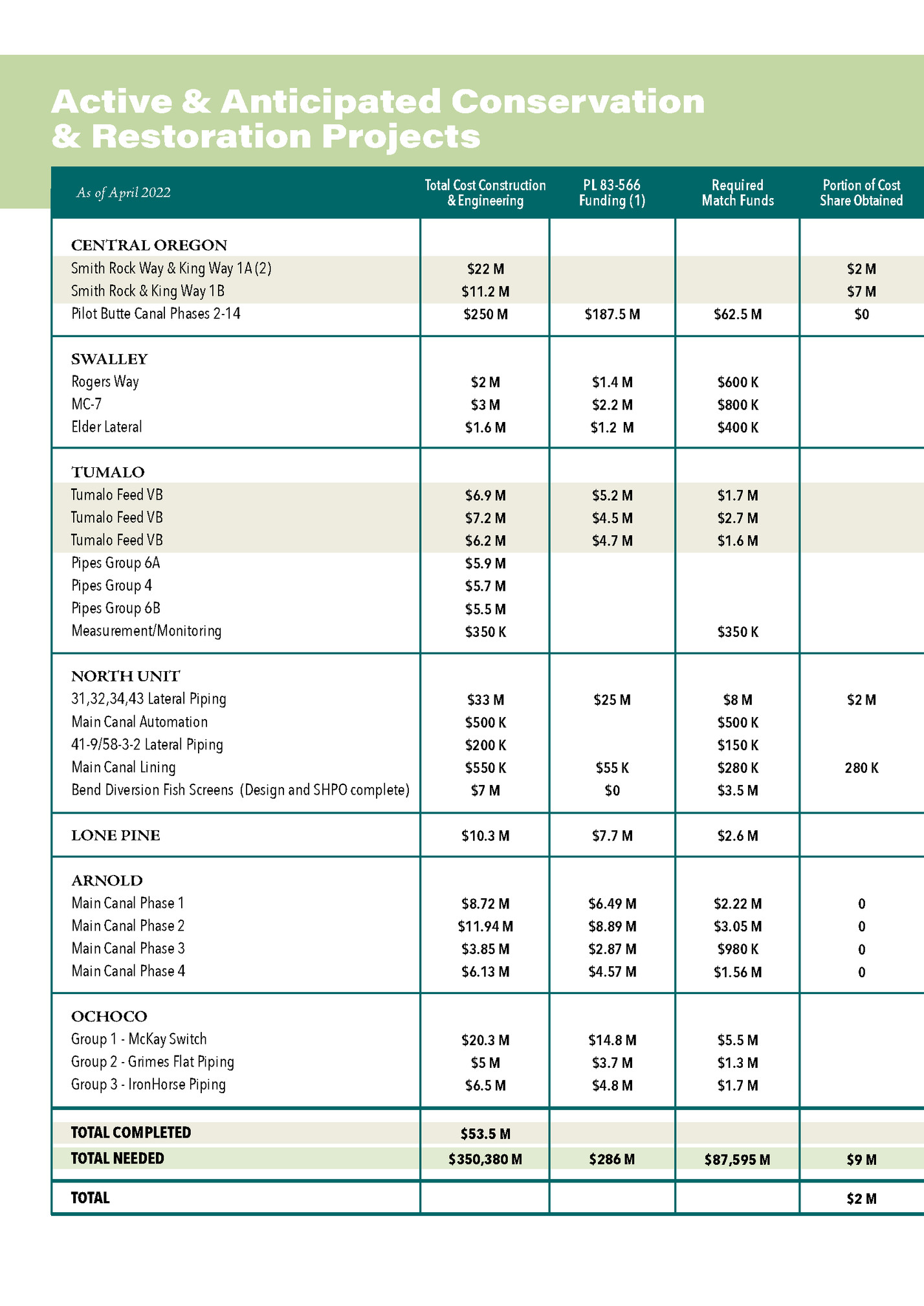
The Deschutes Basin Habitat Conservation Plan (HCP) modifies the timing and magnitude of flow in the Deschutes River and a number of its tributaries through the storage, release, diversion, and return of irrigation water. The plan will serve as one part of a larger regional effort to restore and enhance aquatic habitats for the covered species in the Deschutes Basin. dbbcirrigation.com The DBBC, which includes the eight irrigation districts that have developed the Habitat Conservation Plan, and the City of Prineville are focused on the conservation measures set forth in the HCP, and the measures will be the priorities for the immediate future. Our Work Conservation Measures 30 years of protection $174,000 Increase summer flows and provide habitat restoration funds contributed annually by the City of Prineville and irrigation districts to fish and wildlife habitat for Whychus, Ochoco, conservation. Over $5.2 million in restoration and McKay Creeks. funds collected over the next 30 years. for steelhead trout, 12 years of collaboration bulltrout, sockeye salmon, and Oregon spotted frogs. between irrigators, federal Maintain winter flows in the Crooked River downstream of Bowman Dam of at least 50cfs 480 miles of rivers and creeks affected by eight irrigation districts and the City of Prineville will be addressed. and state agencies, the Confederated Tribes of the Warm Springs Reservation, 9,000+ multiple non-governmental residents are served by the organizations, counties, City of Prineville. Providing cities, and the general public essential services, including in the Deschutes Basin Year-round habitat for Oregon spotted frogs in Crane Prairie Reservoir, upper Deschutes River, Crescent Creek, and the Little public safety, municipal water of Central Oregon. supply, and sewage treatment. 151,000 irrigated acres Deschutes River. and over 7,653 patrons are collectively served by the irrigation districts. In 30 years, the HCP will improve winter flows from 100cfs to 400-500cfs and summer flows down to 1200cfs from 1800cfs. A Major Milestone The DBBC and the City of Prineville achieved a major milestone in December of 2020 with the approval of the Deschutes Basin Habitat Conservation Plan. The plan is the result of nearly twelve years of collaboration between irrigators, federal and state agencies, the Confederated Tribes of the Warm Springs Reservation, cities, counties, multiple non-governmental organizations, and the general public in the Deschutes Basin of Central Oregon. The HCP covers irrigation and related water management operations in the basin for the next 30 years, while enhancing fish and wildlife habitat. “To meet the goals and objectives set forth in the HCP, the districts will continue working together to conserve and manage flows for the benefit of the entire community. The districts are committed putting water into the Deschutes River as soon as conservation piping and on-farm projects are completed.” — Craig Horrell, President Deschutes Basin Board of Control
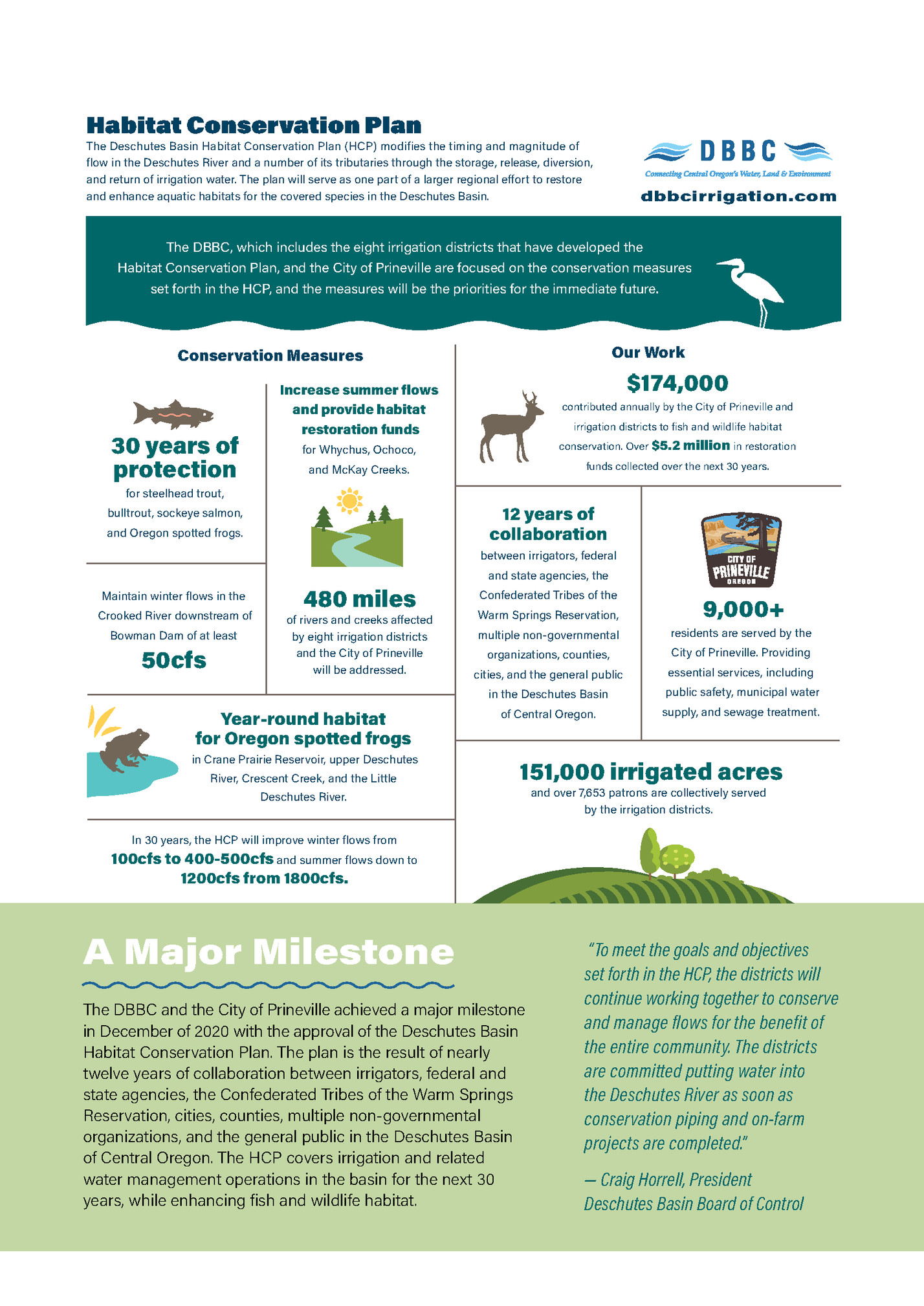
agriculture, conservation, and economic development opportunities of our time. The Time Is Now
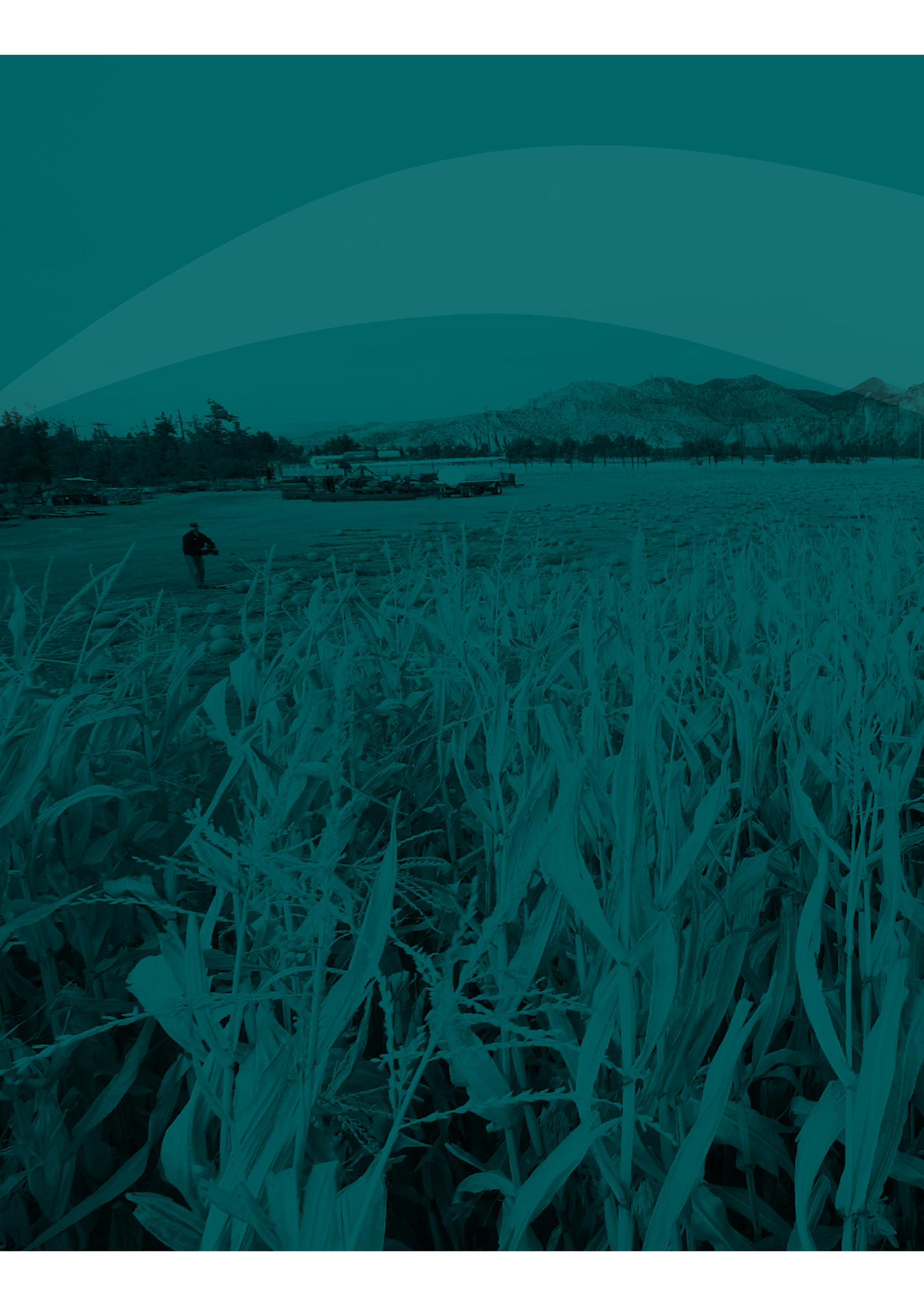
2022
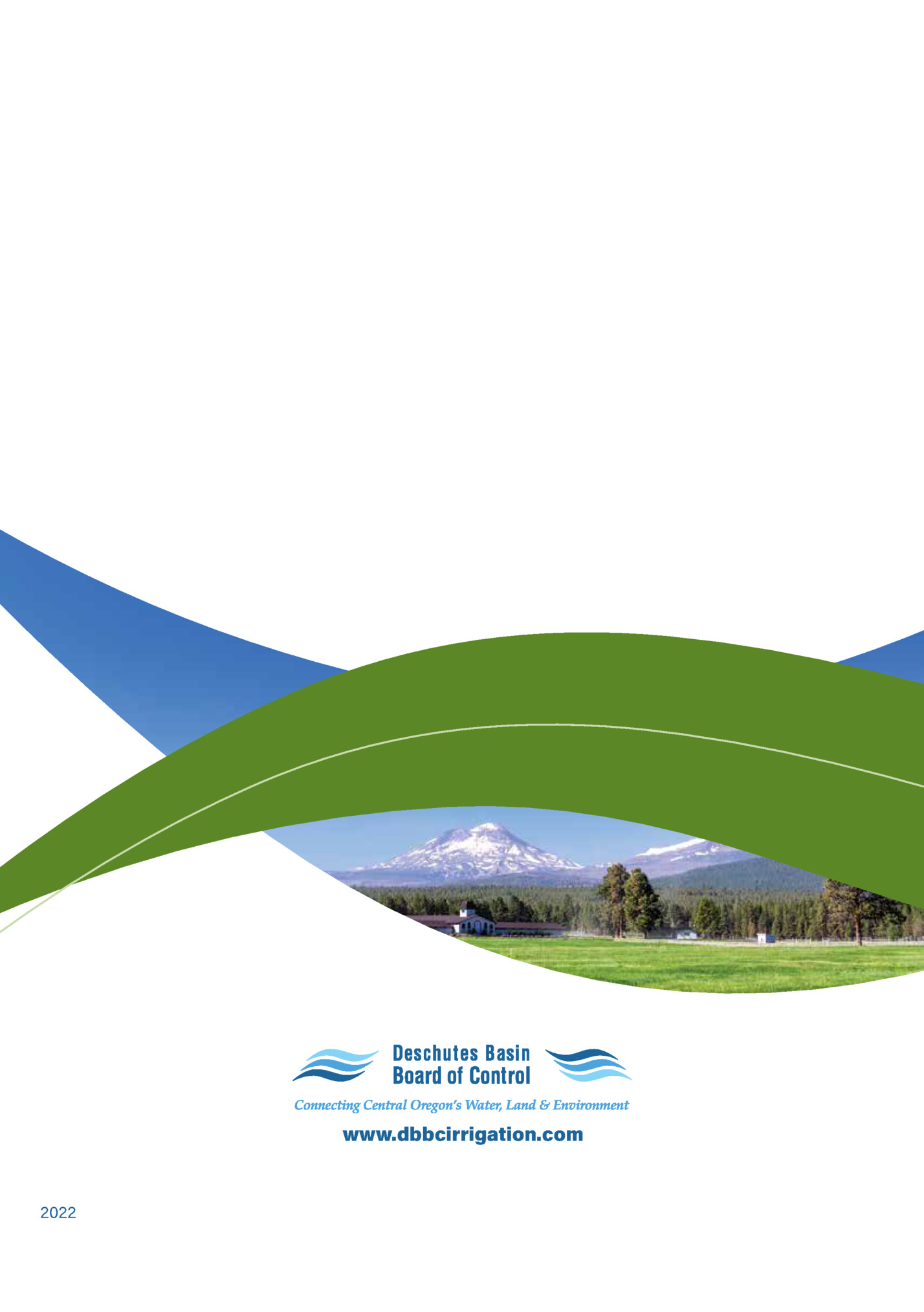
Fleepit Digital © 2021